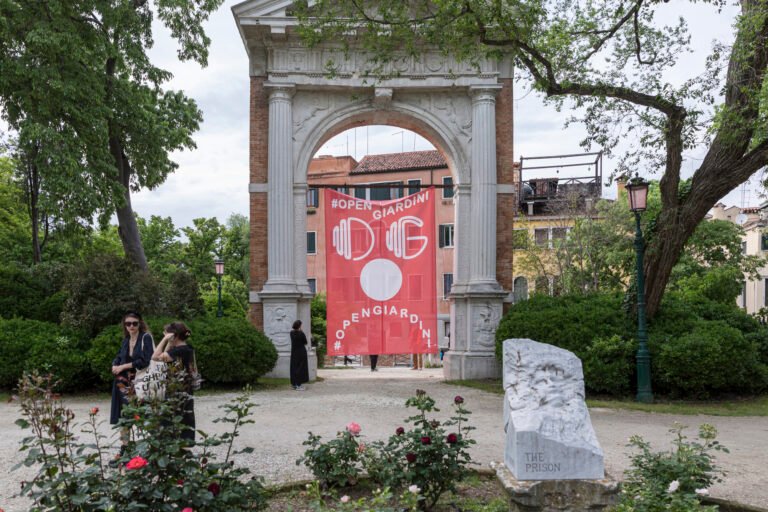A refreshed and acoustically refined David Geffen Hall will open its doors October 8
The somewhat dicey projection made last spring has held true: David Geffen Hall, longtime home of the New York Philharmonic, will reopen its doors to the public an impressive full two years ahead of schedule (and on budget) following an exhaustive $550 million reimagining project focused on much-needed acoustical improvements and aesthetic enhancements. As announced by Lincoln Center earlier this week, the formal reopening date is October 8.
AN last checked in with the pandemic-accelerated project, led by Tod Williams Billie Tsien Architects and Toronto’s Diamond Schmitt, over the summer when it was in the final construction homestretch; at the time, an exact reopening date had yet to be announced (although the project was set to be ready by early fall.)
“The hall is expected to open in October 2022, but that’s hard to believe when you’re standing in the lobby, hard hat on, and squinting through the sawdust as workers haul plywood or sit nearby on kneepads tiling floors,” wrote AN correspondent Emily Conklin in her assessment following a hard-hat tour. “Upon completion, though, you’ll enter Geffen Hall through a garage-style rolling door that adds an indoor-outdoor feel to the entire space.”

The Max Abramovitz-designed concert hall opened in 1962 as the first completed venue at the now-16-acre Lincoln Center for the Performing Arts complex on the Upper West Side of Manhattan. Philip Johnson’s New York State Theater (now the David H. Koch Theater) opened in 1964, followed in 1965 by Eero Saarinen’s Vivian Beaumont Theater and SOM’s New York Public Library for the Performing Arts. The Wallace Harrison–designed Metropolitan Opera House opened in 1966 with Alice Tully Hall and the new Juilliard School coming three years later in 1969. Other key facilities have been built in subsequent decades while older buildings have been improved, expanded, and reconfigured.
Just as Lincoln Center has undergone sweeping changes over the years, so has the home of the New York Philharmonic. At opening, the now-60-year-old venue was known as Philharmonic Hall. In 1973, it was renamed Avery Fisher Hall, a moniker that stuck around until 2015 when media mogul David Geffen bestowed Lincoln Center with a catalytic $100 million gift toward a sweeping renovation of the building—one that just now is finished.

The design team of Tod Williams Billie Tsien Architects and Diamond Schmitt was announced in late 2019, after previous plans to revamp the space, including one scheme led by Foster + Partners, fizzled out.
A press release announcing the October 8 reopening referred to the David Geffen Hall reimagining project as “a statement of faith in our city across a massive team of people who believed in the enduring power of New York’s cultural landscape, even in moments when the city’s future was unclear.” The project, which does away with 500 seats in the theater while making available “tens of thousands” of square feet for new cultural use, supports $600 million in ongoing economic development as well as 6,000 jobs for New Yorkers. The project team secured 42 percent participation from minority- and women-owned businesses during the course of construction while 52 percent of the workforce came from underrepresented communities in the NYC area, according to Lincoln Center.
The project did not alter the original Abramovitz facade or expand the footprint of the hall.

On the afternoon of October 8, a new immersive multimedia work by Etienne Charles, San Juan Hill: A New York Story, will debut at the reimagined concert hall. Per the New York Philharmonic, the work, performed by by Etienne Charles & Creole Soul with the philharmonic conducted by Jaap van Zweden, will meld “music, visuals, and original first-person accounts of the history of the San Juan Hill neighborhood and the indigenous and immigrant communities that populated the land in and around where Lincoln Center resides.” (Famously the setting of West Side Story, San Juan Hill was razed during a Robert Moses–helmed urban renewal project in the mid-1950s to make way for the Lincoln Center complex.)
In addition to the new work by Etienne Charles, two new site-specific artworks will debut at David Geffen Hall as part of the reopening festivities including Nina Chanel Abney’s San Juan Heal, located on the building’s 65th Street facade. The other, Eclectic Dance to the Music of Time by Jacolby Satterwhite, will be activated on the 50-foot-long Hauser Digital Wall along the lobby marquee. These works will be the “first in what will be a new, rotating series of public commissions for the Hall’s public spaces featuring a new generation of artists,” Lincoln Center explained.

“The revitalization of David Geffen Hall is a symbol that New York is open for business—the largest cultural investment project to open since before the pandemic, accelerated to show that New York is still the vibrant hub of the cultural world,” said Henry Timms, president and CEO of Lincoln Center for the Performing Arts, in a statement. “The fact that we are able to deliver this project on time and on budget speaks to the incredible teamwork at all levels, and sends a clear message that something new and exciting is afoot on this legendary campus—a deep focus on welcome, on audiences both new and existing. You belong here; this is your new David Geffen Hall.”
Joining Tod Williams Billie Tsien Architects, which oversaw the redesign of David Geffen Hall’s public spaces, and Diamond Schmitt, which led the complex renovation of the main theater space itself, on the project team is Akustiks, handling the acoustic design, Fisher Dachs Associates helming theater planning and design, Kohler Ronan and Thornton Tomasetti serving as engineers, and Turner Construction Company as construction manager.
More on David Geffen Hall’s reopening programming and upcoming events can be found here. AN will also follow up in the coming weeks with a closer look at the refreshed and revitalized NYC cultural anchor.

